#Fournier types
Explore tagged Tumblr posts
Text

37.2 Paris
#37.2 Paris#photographic#agency#photography#photographers#studio#Paris#portfolio#grid#typography#type#typeface#font#PS Fournier Std#2024#Week 07#website#web design#inspir#einspiration#happywebdesign
9 notes
·
View notes
Text
Pentiment's Complete Bibliography, with links to some hard-to-find items:
I've seen some people post screenshots of the game's bibliography, but I hadn't found a plain text version (which would be much easier to work from), so I put together a complete typed version - citation style irregularities included lol. I checked through the full list and found that only four of the forty sources can't be found easily through a search engine. One has no English translation and I'm not even close to fluent enough in German to be able to actually translate an academic article, so I can't help there. For the other three (a museum exhibit book, a master's thesis, and portions of a primary source that has not been entirely translated into English), I tracked down links to them, which are included with their entries on the list.
If you want to read one of the journal articles but can't access it due to paywalls, try out 12ft.io or the unpaywall browser extension (works on Firefox and most chromium browsers). If there's something you have interest in reading but can't track down, let me know, and I can try to help! I'm pretty good at finding things lmao
Okay, happy reading, love you bye
Beach, Alison I. Women as Scribes: Book Production and Monastic Reform in Twelfth-Century Bavaria. Cambridge Univeristy Press, 2004.
Berger, Jutta Maria. Die Geschichterder Gastfreundschaft im hochmittel alterlichen Monchtum: die Cistercienser. Akademie Verlag GmbH, 1999. [No translation found.]
Blickle, Peter. The Revolution of 1525. Translated by Thomas A. Brady, Jr. and H.C. Erik Midelfort. The Johns Hopkins University Press, 1985.
Brady, Thomas A., Jr. “Imperial Destinies: A New Biography of the Emperor Maximilian I.” The Journal of Modern History, vol 62, no. 2., 1990. pp.298-314.
Brandl, Rainer. “Art or Craft: Art and the Artist in Medieval Nuremberg.” Gothic and Renaissance Art in Nuremberg 1300-1550. The Metropolitan Museum of Art, 1986. [LINK]
Byars, Jana L., “Prostitutes and Prostitution in Late Medieval Bercelona.” Masters Theses. Western Michigan University, 1997. [LINK]
Cashion, Debra Taylor. “The Art of Nikolaus Glockendon: Imitation and Originality in the Art of Renaissance Germany.” Journal of Historians of Netherlandish Art, vol 2, no. 1-2, 2010.
de Hamel, Christopher. A History of Illuminated Manuscripts. Phaidon Press Limited, 1986.
Eco, Umberto. The Name of the Rose. Translated by William Weaver. Mariner Books, 2014.
Eco, Umberto. Baudolino. Translated by William Weaver. Mariner Books, 2003.
Fournier, Jacques. “The Inquisition Records of Jacques Fournier.” Translated by Nancy P. Stork. Jan Jose Univeristy, 2020. [LINK]
Geary, Patrick. “Humiliation of Saints.” In Saints and their cults: studies in religious sociology, folklore, and history. Edited by Stephen Wilson. Cambridge University Press, 1985. pp. 123-140
Harrington, Joel F. The Faithrul Executioner: Life and Death, Honor and Shame in the Turbulent Sixteenth Century. Farrar, Straus and Giroux, 2013.
Hertzka, Gottfired and Wighard Strehlow. Grosse Hildegard-Apotheke. Christiana-Verlag, 2017.
Hildegard von Bingen. Physica. Edited by Reiner Hildebrandt and Thomas Gloning. De Gruyter, 2010.
Julian of Norwich. Revelations of Divine Love. Translated by Barry Windeatt. Oxford Univeristy Press, 2015.
Karras, Ruth Mazo. Sexuality in Medieval Europe: Doing Unto Others. Routledge, 2017.
Kerr, Julie. Monastic Hospitality: The Benedictines in England, c.1070-c.1250. Boudell Press, 2007.
Kieckhefer, Richard. Forbidden rites: a necromancer’s manual of the fifteenth century. Sutton, 1997.
Kuemin, Beat and B. Ann Tlusty, The World of the Tavern: Public Houses in Early Modern Europe. Routledge, 2017.
Ilner, Thomas, et al. The Economy of Duerrnberg-Bei-Hallein: An Iron Age Salt-mining Center in the Austrian Alps. The Antiquaries Journal, vol 83, 2003. pp. 123-194
Lang, Benedek. Unlocked Books: Manuscripts of Learned Magic in the Medieval Libraries of Central Europe. The Pennsylvania State University Press, 2008
Lindeman, Mary. Medicine and Society in Early Modern Europe. Cambridge University Press, 2019.
Lowe, Kate. “’Representing’ Africa: Ambassadors and Princes from Christian Africa to Renaissance Italy and Portugal, 1402-1608.” Transactions of the Royal Historical Society Sixth Series, vol 17, 2007. pp. 101-128
Meyers, David. “Ritual, Confession, and Religion in Sixteenth-Century Germany.” Archiv fuer Reformationsgenshichte, vol. 89, 1998. pp. 125-143.
Murat, Zuleika. “Wall paintings through the ages: the medieval period (Italy, twelfth to fifteenth century).” Archaeological and Anthropological Sciences, vol 23, no. 191. Springer, October 2021. pp. 1-27.
Overty, Joanne Filippone. “The Cost of Doing Scribal Business: Prices of Manuscript Books in England, 1300-1483.” Book History 11, 2008. pp. 1-32.
Page, Sophie. Magic in the Cloister: Pious Motives, Illicit Interests, and Occullt Approaches to the Medieval Universe. The Pennsylvania State University Press, 2013.
Park, Katharine. “The Criminal and the Saintly Body: Autopsy and Dissectionin Renaissance Italy.” Renaissance Quarterly, vol 47, no. 1, Spring 1994. pp. 1-33.
Rebel, Hermann. Peasant Classes: The Bureaucratization of Property and Family Relations under Early Habsburg Absolutism, 1511-1636. Princeton University Press, 1983.
Rublack, Ulinka. “Pregnancy, Childbirth, and the Female Body in Early Modern Germany.” Past & Present,vol. 150, no. 1, February 1996.
Salvador, Matteo. “The Ethiopian Age of Exploration: Prester John’s Discovery of Europe, 1306-1458.” Journal of World History, vol. 21, no. 4, 2011. pp.593-627.
Sangster, Alan. “The Earliest Known Treatise on Double Entry Bookkeeping by Marino de Raphaeli.” The Accounting Historians Journal, vol. 42, no. 2, 2015. pp. 1-33.
Throop, Priscilla. Hildegarde von Bingen’s Physica: The Complete English Translation of Her Classic Work on Health and Healing. Healing Arts Press, 1998.
Usher, Abbott Payson. “The Origins of Banking: The Brimitive Bank of Deposit, 1200-1600.” The Economic History Review, vol. 4, no. 4. 1934. pp.399-428.
Waldman, Louis A. “Commissioning Art in Florence for Matthias Corvinus: The Painter and Agent Alexander Formoser and his Sons, Jacopo and Raffaello del Tedesco.” Italy and Hungary: Humanism and Art in the Early Renaissance. Edited by Peter Farbaky and Louis A. Waldman, Villa I Tatti, 2011. pp.427-501.
Wendt, Ulrich. Kultur and Jagd: ein Birschgang durch die Geschichte. G. Reimer, 1907.
Whelan, Mark. “Taxes, Wagenburgs and a Nightingale: The Imperial Abbey of Ellwangen and the Hussite Wars, 1427-1435.” The Journal of Ecclesiastical History, vol. 72, no. 4, 2021, pp.751-777.
Wiesner-Hanks, Merry E. Women and Gender in Early Modern Europe. Cambridge University Press, 2008.
Yardeni, Ada. The Book of Hebrew Script: History, Palaeography, Script Styles, Calligraphy & Design. Tyndale House Publishers, 2010.
528 notes
·
View notes
Text
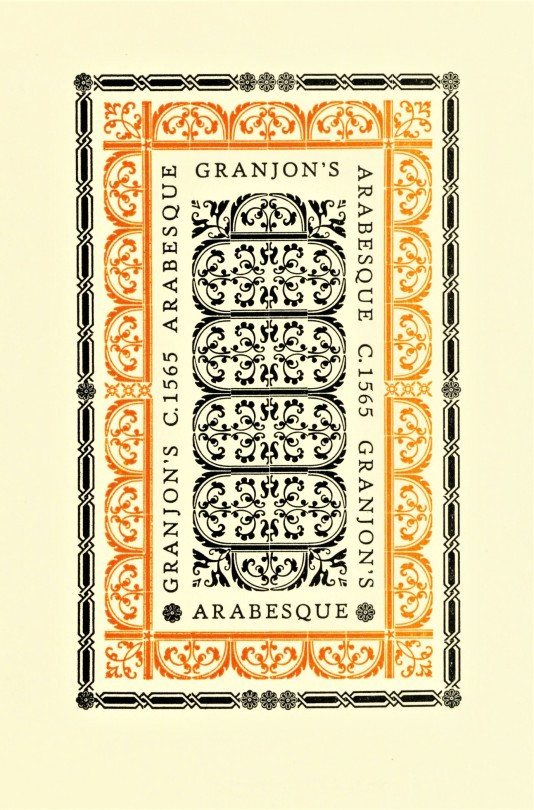
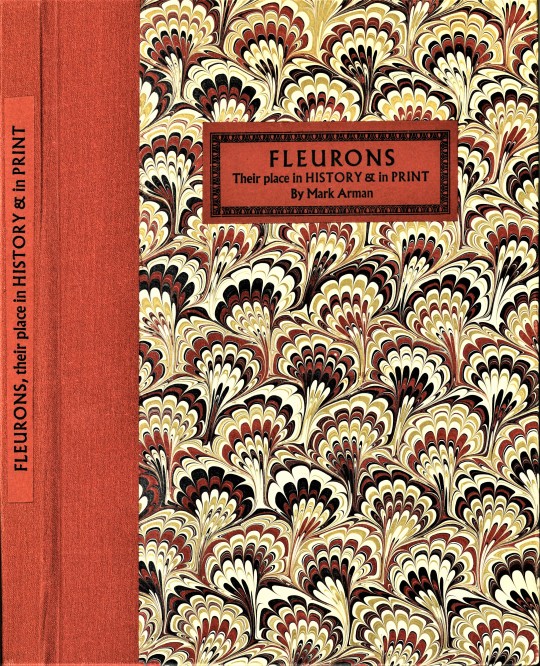




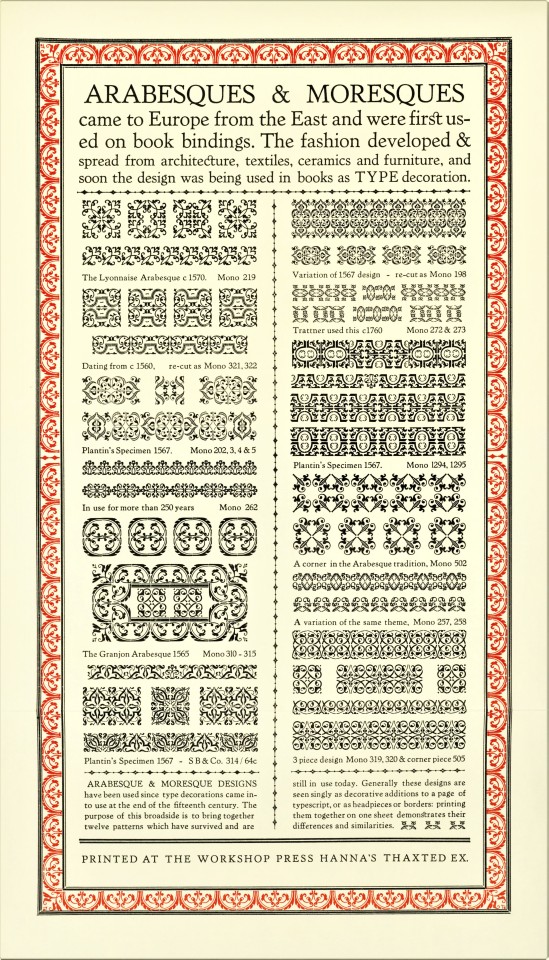

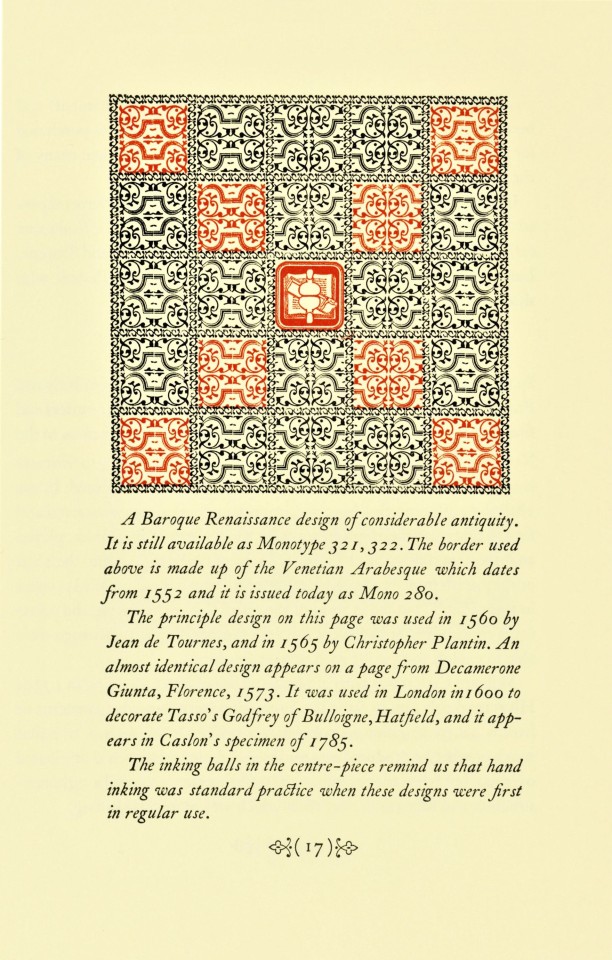

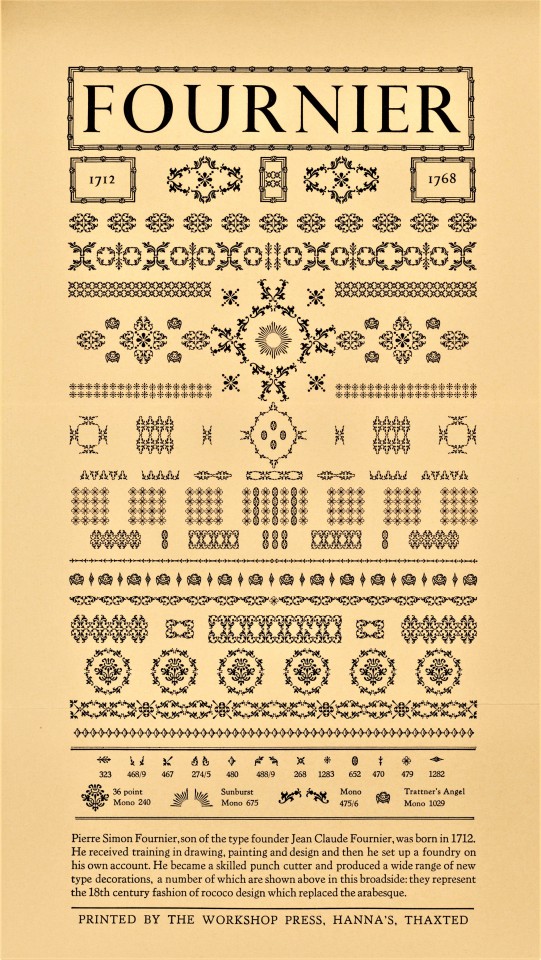
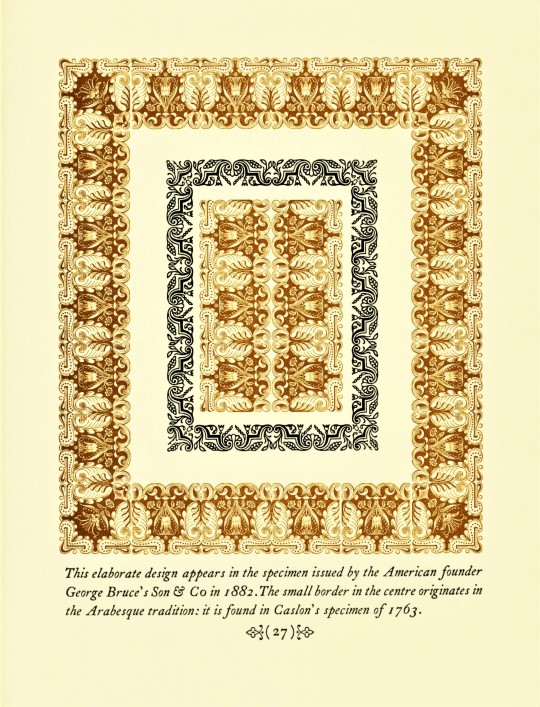


Typography Tuesday
Fleurons or Printers' Flowers have been a prominent element of typographic tradition at least since the early 16th century, especially those of designer-punchcutter Robert Granjon. They became less used over the 17th century, but were revived in the mid-18th century when Pierre Simon Fournier introduced an entirely new style of printers' flowers. Soon after, their use enhanced as a fashion for classical typography changed the concept of type decoration at the end of the 18th century. The revival of fine typographic design in the late 19th century spurred a proliferation of new fleuron designs in the 20th century that has not abated to this day.
Fleurons may be combined in innumerable ways to create ornate and intricate typographic patterns. Today we show a few of those patterns from Fleurons, Their Place in History & in Print, written, designed, printed, and bound in 1988 by English type and printing enthusiast Mark Arman at his Workshop Press in Thaxted, Essex, in an edition of 170 copies signed by the author/printer. This book is another from the recent of from the estate of our late friend Dennis Bayuzick. Of printing fleurons, Arman writes:
. . . they can be grouped in a variety of combinations: elaborate arrangements are possible, and great enjoyment may be had exploring their possibilities. When I realised all this I began a collection of type decorations which, in the past seven years, has grown considerably. Part of the enjoyment has been finding specific designs. . . . All my 19th century decorations have come from old printing houses which have ceased to operate, or have gone over to litho, so they make a very mixed assortment. . . . [These] are illustrated in the following pages and the text gives a brief account of the craftsmen who created the design.
View other posts on decorative type patterns by Mark Arman.
View other books from the collection of Dennis Bayuzick.
View more Typography Tuesday posts.
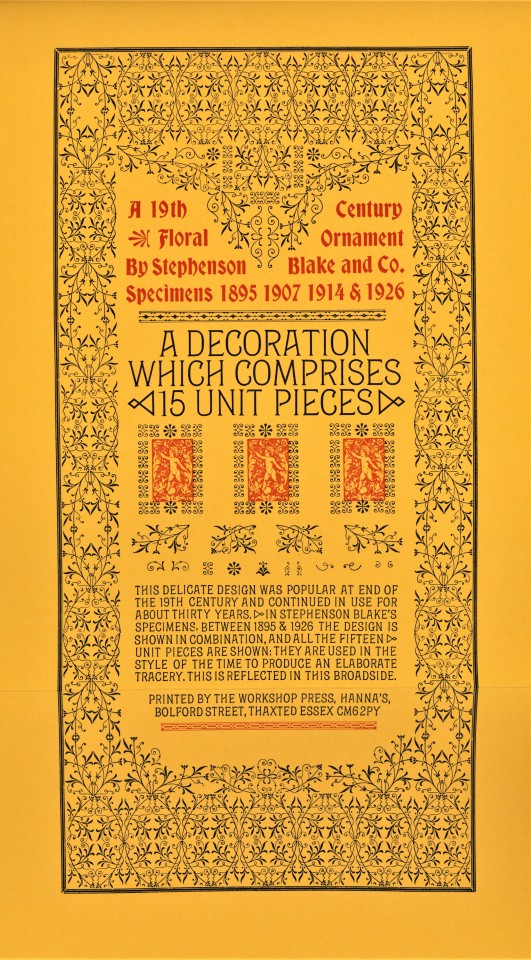
#Typography Tuesday#typetuesday#fleurons#decorative type#20th century#Fleurons#Fleurons Their Place in History & in Print#Mark Arman#Workshop Press#Dennis Bayuzick#type ornaments
340 notes
·
View notes
Text
The last hours of the First Printer of National Liberty ( fiction first part)
Warning: this is a mini fiction featuring Momoro, his thoughts before and during his time on the scaffold. There is therefore a mix of fiction (in the absence of certain information it leaves room for at least a little imagination) and truth. So no need to (too much) point out my historiographical errors. I take all criticism, just know that I have problems with the English translation on long texts so be indulgent (or try to be) :D In any case it's not bad to start at worst we fail and we listen to the criticisms :)
The revolutionary, who would soon have turned forty, knew he had little time left before his execution. He was hurrying to write to his wife, his companion, his friend, his lifelong support, Sophie. At first glance, their marriage seemed unlikely. Antoine François Momoro was only the son of a poor shoemaker and a housemaid, while Sophie was the granddaughter of Pierre-Simon Fournier, one of the most important printers in the country. On her mother's side, she was connected to the Gando family, specialists in typesetting for musical scores.
Her family was so well-connected that Benjamin Franklin himself had purchased printing types from the Fournier family. Nonetheless, the fact that Momoro was a printer and passionately devoted to his craft made the marriage possible. Of course, gossipers claimed the marriage was only due to Sophie’s dowry, but in reality, it was a marriage of love, celebrated in the Luxembourg district. Despite her strong character, Sophie remained, in his eyes, the ideal woman of the Revolution: virtuous, worthy of the women waiting for patriotic men to free them from servitude, fulfilling their role with dignity. Sophie had always supported him behind the scenes, and without her, he would not have been able to serve the Revolution and the country as well as he did.
A son was born shortly after their marriage, named Jean Antoine in honor of Sophie’s father. He brought them joy, pride, and love. By mutual agreement, they decided not to have any more children.
When Momoro was arrested by the conspirators of the Constituent Assembly in 1791, after the infamous Lafayette ordered the Champ de Mars massacre, he was taken in the dead of night. Looking back, the absurdity of that arrest made him smile. So many members of the National Guard to arrest one man! He was imprisoned for 22 days for an imaginary conspiracy—his only crime, and that of his companions, was to have called for the removal of the tyrant Capet after his blatant act of treason. Sophie had held up well, understanding why her husband was fighting and always supporting him. Upon his return, she awaited him, and despite their modesty, they rekindled their connection. They shared a great love and mutual respect, though it was not openly expressed, at least not by Momoro.
Since the beginning of the Revolution, he had explained to his wife that after the Republic and the Revolution, she and their son were the ones he loved the most. He had been hesitant at first, in 1789, especially when Camille Desmoulins came to him with his pamphlet. Momoro had advised him to hold off. Yet, he became more and more involved in the Revolution. He who once told Desmoulins that, for France’s sake, there should be no Republic, now realized how wrong he had been. He was now determined to give everything to the Revolution, to make up for his initial weakness.
Sophie understood him well. She didn’t mind living modestly, as long as there was a roof over their heads and food for her husband, herself, and their son. One day, she shared a decision that proved she had also adopted the revolutionary ideals for which he fought: “I have something to tell you,” she announced one evening over dinner, “I’ve decided to renounce superstition.”
- You’re no longer Catholic? asked the printer, incredulous.
-No, I am no longer Catholic, confirmed the young woman, her tone both lighthearted and resolute. That superstition has only served to infantilize the French people and keep them under the yoke of oppressors. Let’s not forget that, not long ago, the Church punished people with death for imaginary blasphemies, while the clergy, far from living an ascetic life, accumulated the people’s wealth. The fight you lead with our patriots is just: de-Christianization is necessary. The Revolution must make reason triumph.
That evening, they had a joyful discussion about how she wanted to help him more. Of course, her priority had to remain the education of their son, so that he could become a good and virtuous republican, but she could help in other reasonable ways, within the limits imposed on a true republican woman.
Momoro did not share the views of his former friend, the current prosecutor of the Paris Commune, Chaumette, whom he found too misogynistic. He believed that women should primarily assist the men who led the battles. They could discuss politics in private, attend National Convention sessions, help their husbands or sons, and play a role in the grand events necessary to safeguard the Revolution, but they should not be given more active political rights, unlike what some deputies like Charles Gilbert Romme thought.
When Momoro realized, during a mission as a national commissioner, that his book Traité had to be printed urgently, he sent a letter to his wife to handle it. He had warned her that he would entrust her with printing manuals or pamphlets he couldn’t oversee due to distance and administrative duties. She carried out the task carefully, as she did in so many areas.
When Momoro’s mission in Vendée dragged on, his wife and son came to join him. She shared her husband’s view that too many mistakes had been made and that some generals, still loyal to the monarchy, were deliberately losing crucial battles for the Republic's survival. She wasn’t surprised to see parts of Vendée in a deplorable state due to the defeats of republican troops, while in Paris, some ignorantly claimed that certain places were secure. He did not hesitate to express his opinion in a letter. Of course, efforts were made by valiant republicans at war, but it was time for the truth to come out clearly and without ambiguity. To conclude his letter, he added that his son's opinion, though he was still a child, already aligned with those of his parents.
When he returned to Paris, his wife played the role of the Goddess of Reason several times, proud to contribute to the Revolution. On the 15th of Frimaire, Year II, she fulfilled her duties at the Temple of Reason. Many praised her grace and beauty, but during the ceremony, she broke her arm after falling from the stretcher. Once the initial shock passed, she did not wait for her arm to heal completely before resuming the atheist ceremonies. Even he was surprised by her determination.
-I don’t see why my attitude would surprise you, she said with a small smile. You constantly say that our Montagnard deputies should be more revolutionary, instead of putting people to sleep, and you’re not happy that a citizen follows your words.
-They’re not my words alone; many of us think that most of them are becoming new Girondins, Sophie, he said softly, thoughtful.
-How could I forget? Hébert even says they’ve become lullers, she responded with a grimace, invoking the name of the journalist.
— Hébert is my ally, replied Momoro. It’s easy to attack him, but have people forgotten his fights against slavery, profiteers, the maximum, and for de-Christianization? He fought for the poor.
— That’s not what I hold against him, she explained. I know alliances are necessary, just as you do. It’s not the language he uses in his paper; after all, Le Père Duchesne is quite successful, though I would have preferred a paper in the style of Marat, who was far better than all the others. The problem is, he’s not honest on certain points. Regarding de-Christianization, he keeps backtracking at times, unlike you, who are the more resolute of the two. He even earns more than you, you who constantly refuse to enrich yourself. And to think he’s become the substitute prosecutor of the Paris Commune... Fortunately, citizen Chaumette is still the prosecutor; otherwise, it would be harder to defend our revolutionary ideas
At that moment, Jean-Antoine decided to join the conversation, wanting to better understand the political issues his parents were defending. They told him it was complex and that he should study first.
« Can I at least attend one of the revolutionary sessions? » he asked, pouting.
-As long as you behave, his mother agreed.
As the conversation wound down, he knew deep down that his wife was right about Hébert. It wasn’t because he had married a former nun. Citizen Marie-Françoise Goupil had a good character and was a dedicated patriot, from what he had seen of her. He had even seen them privately as a couple with their daughter, showing a sincere and touching love between them.
The problem was that Hébert often wavered in his actions. He would sometimes backtrack, particularly on de-Christianization. One day, he endorsed it and recommended it; another day, depending on his interests, he praised “citizen Jesus,” as he called him. Momoro also disliked that in the summer of 1793, while the people of Paris were suffering, Hébert had moved into a more luxurious residence, not to be closer to political clubs or more efficient as a revolutionary, but for personal reasons. Sure, the printing press would have been on the ground floor, but Momoro didn’t see the point, as Hébert already had one near his previous home. He confronted him about it, saying that a man of his importance should live more soberly, out of respect for the Parisian people who were suffering, especially if he aimed for a higher political position. But Hébert laughed in his face, claiming that Momoro needed to be less rigid.
Since those events, Momoro still considered Hébert an important ally, but not as reliable as before. As for Sophie, she had judged him unworthy of fighting alongside them for much longer.
Today, he would have liked to publicly show his disdain for Hébert, for once again trying to retreat during the insurrection that had led them here, when he saw it would fail. To him, it was a great act of cowardice, especially for a man like Hébert, who had such high responsibilities toward the Revolution. But now Hébert was there, in front of him, either constantly shouting or simply pale. So, he couldn’t tell him everything that weighed on his heart. Vincent and Ronsin had already reproached him enough for his behavior in the cell. Momoro didn’t want to add more. He also understood that Hébert was not only crying for himself but also for Marie-Françoise Goupil. Momoro was just as afraid for Sophie, but he knew that pleading for clemency, as tempting as it might be, was not an option. Clemency was reserved for criminals, not for them. They had to carry themselves as dignified patriots until the end, and this obligation applied even more to Hébert, who had sworn to be ready to the next victim after the martyr for liberty, Marat.
Ronsin, who had vowed to die with dignity, remained stoic when he learned that his wife had been arrested two days earlier. It was another blow to the political prisoners, as they had thought Marie-Angélique would be spared, given that she had evaded arrest longer than Hébert’s and Momoro’s wives. She was an enthusiastic supporter of the Revolution, often frequenting circles that many members of the Convention labeled ultra-revolutionary, yet she remained very kind and simple, though sometimes too frank and playful. She did not deserve this.
However, the revolutionary printer knew the commander-in-chief of the Cordeliers well. He saw that Ronsin, too, was downplaying the pain he felt. They had gone to Vendée together, and whenever Ronsin endured terrible ordeals, he hid them well, due to his bravery and fiery temper. But for those who knew him, one could detect some sadness in his eyes.
“No, no, this isn’t possible!” Hébert continued to sob.
“Perhaps we should joke to lighten the mood a little,” Cloots quipped, a highly controversial figure who advocated for the universality of the Revolution while defending colonialism, slavery, and private property. The only thing he shared with them was de-Christianization. Nevertheless, he sought to calm their spirits, knowing he was sentenced to death.
“Instead of watching Hébert in his depression , finish your letter. They’ll come for us soon,” Vincent remarked, approaching him.
“I’ll apologize to Ronsin once I’m done with my letter,” the printer sighed. “We should have listened to him when he said we needed to prepare for the insurrection faster. I listened to Hébert the first time, even though the Convention had already attacked us several times, and he said we needed to delay things. Even Billaud-Varennes and Collot abandoned us, though that was predictable. In the end, we didn’t succeed in easing the people's suffering, especially this winter. I really failed in my task.”
“Ronsin doesn’t hold it against you,” replied Vincent, still calm, though very pale. “You know his temperament. He spoke harshly because he simply wants you to face the guillotine courageously. He knows you did your best, citizen. But he warned me he’d use a stern tone to ensure you meet your end with dignity. If it were to be done over, I’d send you on another mission, with warnings about certain mistakes. As for him,” Vincent added, nodding toward Hébert, who was shaking with sobs, “all his courage has long abandoned him. His inconsistent behavior caused us many problems.”
“I think he did his best,” Momoro replied, simply not to burden the journalist in his final moments, although he was comforted to know that Vincent and Ronsin didn’t blame him. “Let’s not forget his wife has been arrested. There’s a good chance she’ll follow him to the scaffold.”
“Just like many wives of former deputies,” retorted the former secretary of the War Ministry in an annoyed tone. “Do I need to remind you that the wives of the traitors Brissot and Pétion were imprisoned, along with so many others? That our enemy Manon Roland was sent to the guillotine after her Girondist friends tried, unsuccessfully, to send us there first? Hébert knew there was a great risk this would happen, so he shouldn’t complain. Of course, I hope that Marie-Françoise will be spared, as I do for Sophie and Marie-Angélique. But I’ll remind you: you all knew the risks you were taking, and that included your wives.”
“The only thing we can do for them,” concluded Momoro, “is to die with dignity.”
“You’re absolutely right,” Vincent agreed. “Now, you’d better finish your letter to Sophie.”
Sophie… That virtuous citizen, whom he had been lucky enough to call his wife. He couldn’t help but smile as he remembered the day she fulfilled the role she was most proud of: presiding over the reconciliation between former Catholic priests and Protestant ministers. These former religious leaders had agreed that their respective faiths had only been sustained by clerical charlatanism. It was one of the greatest days of his life, seeing both a revolutionary duty accomplished and his wife radiant, a woman he was immensely proud of.
He finished his letter and reread its contents:
Republican woman, preserve your character, your courage. You know the purity of my patriotism. I shall preserve the same character until death. Raise my son in Republican principles. You cannot manage the printing press alone, so dismiss the workers. Hail to the Marat citizenesses! Hail to the Republicans! I leave you my memory and my virtues. Marat has taught me to suffer.
Author's Note:
I originally planned to write a single chapter about Momoro's journey to the scaffold, but I've decided to split it into two parts. The second part will cover the moments from when he joins the condemned on the way to the hairdresser, to the cart, and finally to his execution. In this first part, the focus will be on his reflections on the revolutionary journey he shared with his wife. In the second part, we will delve into his thoughts on his revolutionary actions, including his role during the fall of Louis XVI, his various missions, his early advocacy for a more equitable distribution of property, his friendships with figures like Rossignol, and his struggle against the Convention, the Dantonists, and Robespierre, whom he no longer viewed as truly revolutionary due to a lack of social engagement for him, among other reasons.
(The Hébertists have long been demonized, to the point where popular culture assumes that if they were alienated by the Convention, it was because they were more bloodthirsty than Robespierre, who is already portrayed as a bloodthirsty figure in some caricatured films. This is a myth we need to dispel.)
His downfall was caused by the attempted insurrection he led with his colleagues, his rift with Chaumette, Hanriot, and Pache, and what he thought of the farcical trial and his final journey to the scaffold. We will see both his good and bad actions, his successes and his mistakes. If I have time, I will also touch on the "truce" between the different factions during the abolition of slavery, a moment when people from various political backgrounds celebrated together. This was a beautiful moment and highlights an important, often forgotten, aspect of the revolution that had global repercussions. A true truce (I think those familiar with current French politics know what I mean).
I also want to clarify that Momoro's opinions do not necessarily reflect my own ( as his paternalistic aspect of women for example it would seem that from his writings he has this defect among many others) . I am simply immersing myself in his thoughts.
Regarding Marie-Angélique Lequesne's arrest, it is possible that she was imprisoned two days before the death of her first husband, Ronsin, according to Mémoires, 1760-1820 by Jean-Balthazar de Bonardi du Ménil. It’s also likely that she moved in ultra-revolutionary circles. According to a biography of Dolley Madison , she was very kind, frank, intelligent, and down-to-earth, qualities I have drawn on for inspiration. Washington's political class appreciated her and the future first lady Madison Dolley would be her friend, which shows that she had developed diplomatic skills.
As for Sophie, I imagined that she shared her husband's political convictions, not only because of her strong character, which is evident given the trials she endured, but also because of her loyalty to him, even in the worst moments. It seems she did share his political views, as seen in Momoro’s letter on the Vendée where he refers to her opinions, the fact that he entrusted her with printing a treaty in his absence, her role as the Goddess of Reason, her accompanying him on his mission to the Vendée, and her adoption of his writing style in the assembly.
After Momoro’s death, I considered writing a chapter about Sophie’s life and hardships following her husband’s execution. (This would include another mention of Marie-Angélique, who later had an unhappy marriage with Turreau, though she was appreciated by Washington's political class). I imagined Jean-Antoine, now an adult, questioning his mother about his father's qualities, as well as the criticisms and mistakes that could be leveled against him. (For historical context it would seem that Jean-Antoine he married a woman from Nantes, so in this fiction, I imagine he learned of the criticisms the people of Nantes had of Carrier, who had allied himself with the Cordeliers in Paris, including Momoro, in the attempted insurrection that led to their downfall).
His mother defends his father but acknowledges some of his mistakes. Jean-Antoine is not fully satisfied, even though he remains proud of his parents and the fight they led. He is loyal to them, despite their never being rehabilitated. He simply wants his parents' good deeds to be recognized, while also admitting that, despite the hellish situation they were in, certain actions—such as refusing to disavow Carrier or some of his father's decisions after months of struggling in the Vendée—were missteps. The long-term consequences of de-Christianization also had negative effects.
Of course, this would be pure fiction, but it would be interesting. As a child who did not participate in the French Revolution (just as we didn’t), we can identify with him as someone looking back with the benefit of hindsight, in contrast to Sophie Fournier Momoro, who was right in the middle of the revolution's action.
11 notes
·
View notes
Text
The Regime of Gluttony and Starvation



Word count: 1.9k
I wonder if they know. Do they sip the golden bubbled concoction and think of every throat that spit cannot even comfort? If they pull seared flesh from polished forks, do they imagine the gnashing, desperate teeth of children who claw desperately at what they call “dog food”?
They call this city Eden. In school, we’re taught that we are safe from disease, agony, and sadness. Something everyone at this grotesquely overdecorated table knows nothing of. How can the pleasured know they are joyous when they have never been pained? How can the glutted know themselves satisfied if they have never been hungry? Eden was built on gluttony. We are told the outside world is sick. A type of illness that doesn't forgive but punishes. I wouldn’t call it sick—morbid maybe. I had learned that word from one of the novels we read in Lyceum education; the book ‘A Dark Hour’ was written some 500 years ago. The author called the country “hell on earth,” a place where filth and evil are magnified. Our city’s teachers reference beyond the walls as desolate nothingness, birthed from a war that was far worse than in the story.
Rusted oranges and browns made the outside world. Kicked-up dirt filtered the air with a thick haze; irritating eyes that would never know tears; water was too precious to be wasted on emotion. The heavy sound of moans and comfortless cries carried with no destination, as did the smell of waste, constantly assaulting the hairs in your nose. Hot air thickened my throat, making it hard to breathe. Bodies discarded like statues haunted the breathing, similar to those on paper that piled into sunken earth. Every movement was strained as if they had to fight for the ability to take a step. Through the swarm of people, there was no end.
Barbed wire snatched a handful of skin from my thigh, making me wince. Before the sultry air could oxidise the gash, flies were frenzying on the crimson.
I had never known suffocation until the day of Matia.
“Joseph, pass the grapes please.” A short man whose jaw seemed to rest slack held out his hand, motioning to the silver bowl that harboured bulbs of green and purple. Passing it to him, I watched as he pierced the skin of a grape with pearly teeth. All I could think of was the people beyond the wall who would fight one another for a cluster of what he would consume in a short moment, not out of hunger but boredom, before the main course arrived.
Praefectus Cain, the man sitting at the head of the table with a Navy Blue suit, held up his glass, motioning for silence. “Welcome, Abigail Dupont, Elijah Fournier, and Joseph Martin.” He hovered his glass in the direction of the girl on my left and the boy on my right. “We thank you for taking your position in the Imperium. We trust that after Matia today your eyes have been opened and you will continue Eden’s legacy and keep our people safe and at peace.”
The values of Eden surround love, whether that means the effort and care of a pastry or the simple act of clearing a guest’s plate. Gratitude is more important than the act itself. The way your fork and knife lie after a meal is communication and appreciation on its own. The meal was delicious if the handles were south with their blade and prongs pointed east. Lust, the overwhelming desire of another, is praised almost as highly as a perfectly smooth-shelled macaroon. Devotion is embroidered into liquor that makes your brain twist as if it were inside a dough mixer.
Here, to love is to feed, eat, indulge, and blur gluttony and greed into the same idea. Seared beef, vanilla sponge cake, caramel, strawberries that dribble at the corners of your mouth, thick shakes with colour dye, the peel of a mandarin, wishbones, salted butter, sherbert, pineapple that burns your tongue, appetisers, and hors d’oeuvres. The table shrank as plates piled from the kitchen-what used to be a pristine cotton tablecloth now plates of every meal imaginable. It is a special day, of course. As people began to feast, I felt as though my body had conformed to a jelly-like substance, unable to move on its own, only able to react to the drunken movement surrounding it.
The next day I found myself focused on every passing person on my way to work. Specifically, I stared at how their mouths curled into smiles and eyes creased with joy. Stupidity and negligence are bliss. If they knew what was outside, they too would be burdened and distraught.
A woman with blonde hair that moved like ripples around her head caught my attention. Her cheeks and lips looked to be stained with cherry juice, and she took her time letting her heels click on and drag with every step she took. At that moment I thought of how she laughed—if it was quiet and withdrawn or louder. How did she prefer her eggs—scrambled, poached, fried, or boiled? I thought about a lifetime in a minute, and during that time, I forgot about what was beyond the walls. Possibly, I could remain this way. If I mocked what everyone around me did, I might find the joy that they experienced. If I married and partied and ate, would that sickening feeling I have held with me since Matia dissipate?
The Imperium was stationed north of Eden, just past a row of oak trees that signified the end of the orchid plantation. I would park in the furthest spot from the entrance, press through a swing door that moves awfully slowly to accommodate those who wobble more than walk, and make my way through the hallway that runs through the city wall. Even though I pass through five days out of seven, I cannot help but stare out the wall’s windows every chance I have. The small slits in the hallway that allowed tainted auburn light to flow through and the large painting-like glass in the central office reminded everyone of what we shield from our citizens. At lunch for an hour, we sat at a stretched table overlooking Eden’s farmland and feasted on whatever specials the chef had plotted, yesterday was a honeyed duck. “I don’t know what is wrong with you, Joseph; this is one of the best ducks I’ve had this year and you refuse to eat more than an appetiser,” Abigaile exclaimed after finishing off the meat.
I replied softly, knowing more than one ear was listening. “My appetite isn’t as strong as it used to be. Thank you for your consideration” It was an uncommon phenomenon, a refusal of food. Not eating is the equivalent of vetoing oxygen. “I’m just going to use the bathroom, excuse me.” I stand, placing the folded unstained napkin on the cushioned chair. Taking a last glance at the quantity of people and the view of my city I continue down one of the hallways. Even though my stomach growled, the idea of eating repulsed me. During the day my mouth would salivate in the hope of relief, by night when all I wanted was to binge I would finally make myself something. Tonight I may have the oysters my father brought round this morning. He works at a lease and every time I crack salt over my plate I think of him, how his skin smelt like the unfiltered water and his hands that were callus and coarse from cutting open their shells.
Taking each step I find myself mimicking the women I see most days on my way here. Click, drag. Click, drag… and just as I do with every window, discarding the bathroom where I was headed, my eyes wander to the clear surface overlooking the apocalyptic world a mere twenty metres away from our utopia. Instead of continuing further, my body lurches to a frozen halt. Apparently, on the other side, they can’t see through the glass. To them, it looks like the stone pattern remains unbroken. I don’t believe that. Staring through the glass, I am met with another man mirroring myself. His eyes are tired but focused and unwavering from mine. His nose has a crease at the bridge as if it were broken, and his teeth are jagged with gums receding so highly that they could have been finger bones. What scared me the most was how hollow his cheeks were. As if scooped with a soup spoon. His face resembles somewhat of Edvard Munch’s ‘The Scream’.
Instead of taking a step forward in concern or back in retreat, I simply stared. When I felt someone lock their knees next to me, my gaze remained on the window in a competition-like fashion.
Praefectus Cain’s firm voice began, “Joseph, is something upsetting you? Are you hungry?”
Pulling my head back, feeling the muscles tense around every vertebra in a rehearsed sequence like piano keys in a glissando. I looked at him—at his round stomach, at his creased forehead, at his thin blond hair, at his tie bar with the words ‘Ab ovo usque ad mala’ engraved into the silver—before staring back at the window like a child and a cartoon film. I felt nauseated like I had just drunk vomitorium, a tiny ounce glass filled with yellow liquid that made you sick so you could go on eating. They usually have them at balls and galas. “I’m fine, thank you… Do…” My voice crackled as if a teaspoon of honey sat on my windpipe. “Do you ever think of helping them, the people out there?”
He thought, not about the answer but how to word it. “Yes, when I was your age.”
“I can’t think of how to describe it. I feel bad, sorry.
“Guilt.” The word was spoken as if he had been waiting to use it.
The word was alien: “I’m sorry, sir, I don’t know what that means.”
We remain facing forward, “It means you have morals, something only a few here hold. Knowledge is the heaviest of all burdens, even if it carries no weight.
“We have food to spare.” By then the man on the other side of the wall had walked off, his feet kicking up more loose orange powder-like dirt.
“How could you choose who receives a bounty? Every living thing is bound by fate. The people of Eden are safe from hunger because they are lucky. If we were to open our resources, what would happen? They are animals, Joseph. Unlike us, their world does not have a drop of civilisation.” Through the window, two boys ran towards a bird that had fallen to the ground. With desperate efforts, the taller one had proved victorious in the feathered corpse, and the shorter one crouched over the ground, echoing the fallen animal. “Tell me, Joseph, would they eat, or would they devour? The flesh of our loved ones would be torn from their bones and they would drink like we do red wine. These animals do not know amity, love, or kindness; we are survivors, that is what separates us.”
With a sigh, I could feel the pads of my fingers tingle with anticipation of cold sweat and unease. “Then, if being inhumane constitutes our difference, are we not the same?”
#music#books#reading#writers on tumblr#art#books and literature#quote#dystopian#science fiction#futuristic#dystopian literature#creative writing#short story#poems on tumblr
4 notes
·
View notes
Text
*DR. SMITA GOEL HOMEOPATHY CLINIC*
Gangrene is a term that describes dead or dying body tissue(s) that occurs because the local blood supply to the tissue is either lost or is inadequate to keep the tissue alive. Gangrene has been recognized as a localized area of tissue death since ancient times.
There are two major types of gangrene, referred to as dry and wet. Many cases of dry gangrene are not infected. All cases of wet gangrene are considered to be infected, almost always by bacteria. Mainly both wet and dry gangrene to occur are the digits (fingers and toes) and other extremities (hands, arms, feet, and legs).
Symptoms and Signs
Its depends on the type of gangrene, the location of the gangrene (internal organs, skin, extremity, etc.), and how much the gangrene has progressed.
In dry gangrene, the skin is hard and black or purplish. In earlier stages, the skin may be pale and either numb or painful.
In wet gangrene, the affected area will be swollen with blisters oozing fluid; and the area may be red and warm with a foul odor.
Gas gangrene causes severe pain, fever, and the skin will crackle like bubble wrap when pressed.
Fournier's gangrene will cause redness and swelling in the genital area. Patients with gangrene affecting internal organs such as the gallbladder or intestines will typically be very sick with fever, low blood pressure, and severe pain.
Wet gangrene (also termed moist gangrene) is the most dangerous type of gangrene because if it is left untreated, the patient usually develops sepsis and dies within a few hours or days. Wet gangrene results from an untreated (or inadequately treated) infection in the body where the local blood supply has been reduced or stopped by tissue swelling, gas production in tissue, bacterial toxins, or all of these factors in combination. Additionally, conditions that compromise the blood flow such as burns or vascular trauma (for example, a knife wound that cuts off arterial flow) can occur first. Then the locally compromised body part or area becomes infected, which can result in wet gangrene. Wet gangrene is the type that is most commonly thought of when the term gangrene is used. Wet gangrene often produces an oozing fluid or pus, hence the term "wet." Early stages of wet gangrene may include:
• Signs of infection
• Aching pain with swelling
• A reddish skin color or blanched appearance if the area is raised above level of the heart
• Coolness on the skin surface
• Ulceration
• A crackly sensation when the skin is pressed due to gas in the tissue
These stages may progress rapidly over hours to days
Dry gangrene, if it does not become infected and progress to wet gangrene, usually does not cause sepsis or death. However, it can result in local tissue death with the tissue eventually being sloughed off. Usually, the progression of dry gangrene is much slower (days to months) than wet gangrene because the vascular compromise slowly develops due to the progression of diseases that can result in local arterial blockage over time.
The stages are similar to wet gangrene (see above), except there is no infection, pus, wetness, or crackly-feeling skin, because there is no gas production in the uninfected tissue. Disease-fighting cells are not recruited to the area.
There are many diseases that may lead to dry gangrene; the most common are:
• Diabetes
• Arteriosclerosis
• Tobacco addiction (smoking)
Infrequently, dry gangrene can occur quickly, over a few hours to days, when a rapid arterial blockage occurs in part of the body (for example, an arterial blood clot suddenly occludes a small artery to a toe). Dry gangrene often produces cool, dry, and discolored appendages (sometimes termed "mummified") with no oozing fluid or pus, hence the term "dry."
The common cause of either wet or dry gangrene is loss of an effective local blood supply to any tissue. Loss of the blood supply means tissues are deprived of oxygen, thus causing the cells in the tissue to die. The most common causes of tissue blood supply loss and major risk factors for gangrene are:
• Infections
• Trauma
• Poor wound healing
• Diseases like diabetes mellitus that can affect blood vessels (usually arteries)
Rarely, Raynaud's disease can lead to gangrene of fingers and toes.
Dry gangrene causes
Dry gangrene can result from any of a number of diseases or mechanisms that can reduce or block arterial blood flow. Although the most common diseases that can cause dry gangrene are diabetes, arteriosclerosis, and tobacco addiction, there are many other lesser-known diseases that can lead to this problem. For example, some autoimmune diseases that attack blood vessels (vasculitis syndromes) may result in enough damage to cause dry gangrene. In other cases, dry gangrene can result from various external mechanisms such as burns, frostbite, and arterial trauma caused by accidents, wounds, or surgery.
Causes
Wet gangrene can result from all the causes listed above for dry gangrene but always includes infection. In some cases of wet gangrene, the initial cause is considered to be the infection. Although many types of organisms (mainly bacteria) are known to participate in wet gangrene infections, the classic bacterial organism or bacterial infection associated with wet gangrene is Clostridium perfringens, an anaerobic bacterium that grows best when oxygen is not present. These bacteria can cause myonecrosis (muscle fiber death) with exotoxins and produce gas bubbles in the dead and dying tissues (gas gangrene). This leads to localized swelling with compression and loss of blood flow to tissue, allowing bacteria to extend the infection to the connective tissue of muscle, skin, and other areas, causing necrotizing fasciitis (death of connective tissue). Necrotizing fasciitis, in turn, allows the infection to spread, frequently with speed, out of the locally infected site to adjacent areas or to the bloodstream (sepsis). Although this cascade of events is seen with Clostridium perfringens often as the single infecting organism type, it can be caused by many other organisms such as Streptococcus, Staphylococcus, Bacteroides, and Escherichia. Usually two or more of these organisms occur in the infection, and many investigators suggest that together the organisms help each other (synergy) to extend the infection.
There are several subtypes of wet gangrene:
• Gas gangrene means gas is present in the gangrenous tissue as described above.
• Fournier's gangrene is gangrene with necrotizing fasciitis that occurs mainly in male genitalia.
• Internal gangrene is a general term that means gangrene is affecting an internal organ. Internal gangrene types are usually named after the organ that is affected (for example, gangrene of the appendix, gangrenous gallbladder, and gangrenous bowel involving the colon, rectum, or other areas).
Leprosy (Hansen's disease) is not a variant of wet or dry gangrene, although it can result in local tissue loss that can resemble gangrene. It is a disease caused by bacteria that are transferred usually from person to person. It causes nodules and sores. M. leprae infection slowly destroys peripheral nerve endings in digits and mucous membranes over a period of years with loss of sensation. Digits and other local areas get repeatedly injured due to sensation loss and can become mutilated or develop atrophy and be sloughed off. However, if the chronic lesions become infected with other organisms, wet gangrene can develop in patients with leprosy.
www.thehomeopathyclinic.co.in
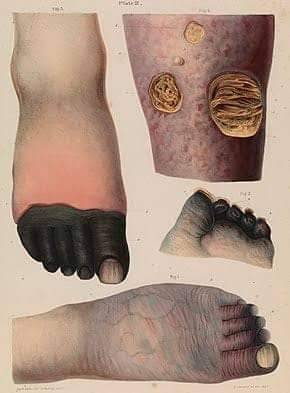
#greater noida#best homeo clinic in indirapuram#homeopathy doctor#homeopathy clinics#ghaziabad#best skin doctor in ghaziabad#homeopathy#homeopathy cold treatment in indirapuram#homeopathy for ibs#homeopathy medicine#best homeopathy clinic in indirapuram#best homeopathy doctor#homeopathy skin allergies treatment in indirapuram#homeopathy skin allergies treatment in noida#homeopathy specialist in indirapuram#homeopathy treatment#laser treatment in indirapuram#ghaziabad latest news#ghaziabadnews#child doctor in noida#child specialist in noida#noida news#noida#ayurvedic doctor in ghaziabad#skin specialist in indirapuram#indirapuram#wave city ghaziabad#delhigram#delhifood#east delhi
2 notes
·
View notes
Text
Old post:
Despicable Minions (DM AU) - New facts 2
Wilde-Fournier's household heights (female minions aren't included):
Amber - 183 cm
Tom - 195 cm
Damien - 210 cm
Ruby - 176 cm
Amber's whole first name isn't "Amber", it's "Amberlynn". Nobody really calls her that, though.
Since the female minions started living with Amber and her family, the Wilde-Fournier's house has never been robbed by any robber - Susie and Vivi, the IT experts of the female minion tribe, installed a very effective security system that does its job well.
Damien used to be reserved, careful and distrustful after his parents kicked him from home and before he met Tom. Nowadays, he's pretty easy-going and calm, though he kept his carefulness, stubbornness and perseverance.
Most of Amber's sweaters were knitted either by Ruby or by Vicky.
Vicky, the female minion alpha, sees Amber as her second younger sister and is very overprotective of her.
Tom easily panics when something unexpected happens and it's mostly Damien who's saving the situation.
Lydia, the tallest of all minions, also likes chocolate and often fights with Dove to get one (much to the chagrin of Vicky because Lydia and Dove usually fights right under her office).
Melinda, Dove's youngest sister also known as Meli, Mels or Melody, is the one who deals with the two fighters most of the time.
Minnie owns a monkey plushie that Rita, Dove's other sister, made for her.
Colette has type 1 diabetes and has to follow a diet and an eating plan.
Amber helps her human friend and often exercises with her - both people with asthma and people with diabetes should exercise. From what I have read, it affects them positively (if they're exercising the way they should, of course).
Also, Amber sometimes makes Colette some dia desserts.
Bonus facts:
I've stated in the past that Colette is a talented hobby dancer - this ability is a little to the chagrin of her mother Roselle, because it reminds her a lot of Balthazar Bratt (Colette's biological father).
Speaking of Roselle (b. 2nd January 1980), she works in the office of an unnamed company. Even if she strictly stated she doesn't want any partner (unsurprisingly, when you think about how she ended after falling love with Balthazar Bratt), there's one customer of Wilde-Fournier's bakery who would like to ask her out - Collete, Amber, Tom and Damien (and the female minions, of course) offered him some help with this plan.
Pearl, Melinda's wife, is a family fashion designer and is responsible for a lot of outfits, including several of Amber's and/or Colette's ones.
Both Damien and Tom has a significant scar on each of their faces:
Dami has a scar on his crooked nose from how he fell on the ground back in France - when I said his parents kicked him from home, it wasn't just a metaphor. Damien's father really threw his son on the ground (Dami used to be pretty slim before he started his bakery path). And speaking of his crooked nose, it's also from the fall.
Tom's scar is on his lower lip and it's from a fight he had. As I said before, the Wilde-Fournier's house has never been robbed by any robber since the minions moved there, however one broke into the house a year before Tom and Dami met. Tom heard the robber and decided to protect his aunt and daughter but he got into the fight - the robber was eventually arrested and Tom had to go to the hospital due to a big number of bruises… and because of the scar on his lip.
Tom isn't the greatest fighter but when his father's instinct takes over, he can be pretty dangerous.
Roselle's family is also from France but compared to Damien, she (Roselle) was already born in Canada (not in Toronto, though).
Her parents are alive and still in contact with their daughter and granddaughter. They always stop by during holidays.
#dm#dm au#minions#the minions#minions the rise of gru#amber wilde-fournier#design#design oc#alternative universe#damien fournier#tom wilde#ruby wilde#female minions#female#minion tribe#female minion tribe
6 notes
·
View notes
Photo

*DR. SMITA GOEL HOMEOPATHY CLINIC* Gangrene is a term that describes dead or dying body tissue(s) that occurs because the local blood supply to the tissue is either lost or is inadequate to keep the tissue alive. Gangrene has been recognized as a localized area of tissue death since ancient times. There are two major types of gangrene, referred to as dry and wet. Many cases of dry gangrene are not infected. All cases of wet gangrene are considered to be infected, almost always by bacteria. Mainly both wet and dry gangrene to occur are the digits (fingers and toes) and other extremities (hands, arms, feet, and legs). Symptoms and Signs Its depends on the type of gangrene, the location of the gangrene (internal organs, skin, extremity, etc.), and how much the gangrene has progressed. In dry gangrene, the skin is hard and black or purplish. In earlier stages, the skin may be pale and either numb or painful. In wet gangrene, the affected area will be swollen with blisters oozing fluid; and the area may be red and warm with a foul odor. Gas gangrene causes severe pain, fever, and the skin will crackle like bubble wrap when pressed. Fournier's gangrene will cause redness and swelling in the genital area. Patients with gangrene affecting internal organs such as the gallbladder or intestines will typically be very sick with fever, low blood pressure, and severe pain. Wet gangrene (also termed moist gangrene) is the most dangerous type of gangrene because if it is left untreated, the patient usually develops sepsis and dies within a few hours or days. Wet gangrene results from an untreated (or inadequately treated) infection in the body where the local blood supply has been reduced or stopped by tissue swelling, gas production in tissue, bacterial toxins, or all of these factors in combination. Additionally, conditions that compromise the blood flow such as burns or vascular trauma (for example, a knife wound that cuts off arterial flow) can occur first. Then the locally compromised body part or area becomes infected, which can result in wet gangrene. Wet gangrene is the type that is most commonly thought of when the term gangrene is used. Wet gangrene often produces an (at Ghaziabad, India) https://www.instagram.com/p/Co3mzyCpWq1/?igshid=NGJjMDIxMWI=
6 notes
·
View notes
Note
hi! I love bridgerton type groups. do you have fcs for the last fournier child?
thank you, you found the right place! send me kit young, zendaya, india amarteifio, abbie hern, arsema thomas, daniel kaluuya, ebonee noel, justice smith, ruby barker, savannah steyn, emma naomi, crystal clarke and taylor russel!

0 notes
Text
13. Levée du secret - Partie 2 (pseudossier : le phénomène ovni)
À lire avant pour ne pas être trop perdu :
1. Petit historique - Partie 1
Pseudocomplément : l'affaire Roswell
2. Petit historique - Partie 2
3. Petit historique - Partie 3
4. Caractéristiques générales
5. Comportement et lieux d'intérêt
6. Troisième type
Pseudocomplément : le mystère Oummo
7. Abductions
8. Multiples interprétations
9. Cover-up américain
10. Opérations secrètes - Partie 1
11. Opérations secrètes - Partie 2
12. Levée du secret - Partie 1























Je remercie les chercheuses et chercheurs cité·e·s dans ce pseudossier pour leurs travaux. Pour réaliser ce pseudossier, je me suis appuyé sur des films documentaires, des interviews vidéos, des ouvrages, des articles de presse ou de sites internet. Je remercie les pseudosphéristes passionnés qui en sont à l’origine.
Principales pseudosources :
Globalement, je me suis appuyé sur les articles suivants publiés sur le site UAP Check news et écrits par Thibaut Canuti : (en anglais) https://www.uapcheck.com/news/id/1345/the-genesis-of-a-disclosure/ (en anglais) https://www.uapcheck.com/news/id/1923/the-skinwalker-ranchs-legacy/ (en anglais) https://www.uapcheck.com/news/id/1967/the-nimitz-ufo-incident/ (en anglais) https://www.uapcheck.com/news/id/2002/2017s-journalistic-bombshell/ Ainsi que sur les vidéos suivantes : Chaine de Philippe Fabry, OSINT #99 | OVNIS : QUE SE PASSE-T-IL AUX USA ? (https://www.youtube.com/watch?v=s1CxhtsHsww&t=2955s) avec Baptiste Friscourt et Guillaume Fournier Airaud Chaine Nuréa TV, Divulgation OVNI aux USA : On fait le point avec Fabrice Bonvin (https://www.youtube.com/watch?v=z0ZXKZDdmfg&t=2637s)
Skinwalker Ranch : https://www.inexplore.com/articles/improbable-skinwalker-ranch Chaine Vertical Project Media, Hypothèses sur les phénomènes paranormaux du Ranch Skinwalker (https://www.youtube.com/watch?v=x43uU4GSnxg&t=1911s) Chaine Nuréa TV, "Skinwalker : Le Mystèrieux Ranch de l’Utah" avec Elisabeth de Caligny (https://www.youtube.com/watch?v=Ueo78b5mBRE)
Objectif de récupération de débris d'ovnis derrière la création de l'AASWAP et Lockheed Martin : Chaine Sentinel News, ALERTE INFO OVNI : David Grusch et Christopher Mellon envoient l'artillerie ! https://www.youtube.com/watch?v=tTKG8y1mI2o&t=596s (à partir de 53 min 25 s) (en anglais) https://nypost.com/2021/04/30/former-sen-harry-reid-thinks-lockheed-martin-may-have-ufo-fragments/
Programme AATIP et Luis Elizondo : (en anglais) https://en.wikipedia.org/wiki/Advanced_Aerospace_Threat_Identification_Program https://www.francetvinfo.fr/economie/emploi/metiers/armee-et-securite/etats-unis-le-pentagone-a-mene-un-programme-secret-de-recherche-sur-les-ovnis-pendant-au-moins-cinq-ans_2519311.html (en anglais) https://www.washingtonpost.com/washington-post-live/2021/06/08/transcript-ufos-national-security-with-luis-elizondo-former-director-advanced-aerospace-threat-identification-program/
Échanges de mails entre John Podesta et Tom Delonge : https://www.liberation.fr/checknews/wikileaks-les-mails-de-john-podesta-ex-conseiller-dobama-et-clinton-evoquent-ils-lexistence-des-extraterrestres-20210618_T3DEEIVQMRFU5J3PLFZ72EP44A/
To The Stars Academy : https://en.wikipedia.org/wiki/To_the_Stars_(company)
Leslie Kean et fuite des documents : (en anglais) https://www.uapcheck.com/news/id/2002/2017s-journalistic-bombshell/
Vidéos d'ovnis : (en anglais) https://en.wikipedia.org/wiki/Pentagon_UFO_videos
Réunions secrètes entre les pilotes et de hauts responsables du congrès : https://www.independent.co.uk/news/world/americas/ufo-sightings-pentagon-us-navy-congress-senators-oceana-a8968256.html (en anglais) https://en.wikipedia.org/wiki/Pentagon_UFO_videos
Témoignage de Ryan Graves et d'autres pilotes : https://www.leparisien.fr/societe/tic-tac-geant-toupie-hypersonique-des-pilotes-de-l-us-navy-racontent-avoir-vu-des-ovnis-28-05-2019-8081538.php
Nouvelles photos et vidéos d'ovnis filmées en 2019 (pyramides, gland…) : (en anglais) https://www.foxnews.com/us/ufos-spotted-navy-best-the-world-has-seen (en anglais) https://www.news18.com/news/tech/is-this-confirmation-that-aliens-are-real-officials-say-leaked-ufo-images-are-authentic-3642443.html (en anglais) https://www.mysterywire.com/ufo/new-uap-photographs/
Propos de John Ratcliffe en mars 2021 : (en anglais) https://www.theguardian.com/us-news/2021/mar/22/us-government-ufo-report-sightings
Cas de Trinity : (en anglais) https://www.dailymail.co.uk/news/article-11579533/DoD-investigate-1945-crash-mysterious-avocado-shaped-UFO.html
Propos de Barack Obama sur les ovnis : (en anglais) https://edition.cnn.com/2021/05/19/politics/barack-obama-ufos/index.html
UATPF : https://fr.wikipedia.org/wiki/Unidentified_Aerial_Phenomena_Task_Force
Rapport du 25 juin 2021 du Pentagone sur les phénomènes aériens non identifiés : https://fr.wikipedia.org/wiki/Rapport_du_25_juin_2021_du_Pentagone_sur_les_ph%C3%A9nom%C3%A8nes_a%C3%A9riens_non_identifi%C3%A9s Egon Kragel, OVNI, Les rencontres qui défient le FBI et le Pentagone, édité par MAX MILO, 2023 (voir la préface)
Déclarations de Bill Nelson : https://www.lefigaro.fr/sciences/ovni-des-scientifiques-francais-dressent-l-etat-des-lieux-20210625
Projet Galileo : (en anglais) https://en.wikipedia.org/wiki/The_Galileo_Project
Rapport de la DIA sur les effets subis par les témoins : https://www.7sur7.be/sciences/rencontre-avec-des-ovnis-radiations-et-grossesses-non-expliquees-le-pentagone-devoile-une-etrange-serie-de-documents~abc78735/?referrer=https%3A%2F%2Fwww.google.com%2F
Audiences au Congrès en 2022 : (en anglais) https://en.wikipedia.org/wiki/2022_United_States_Congress_hearings_on_UFOs
AARO : (en anglais) https://en.wikipedia.org/wiki/All-domain_Anomaly_Resolution_Office
Rapport du Pentagone de janvier 2023 : (en anglais) https://edition.cnn.com/2023/01/12/politics/us-government-ufo-reports/index.html
Différence entre l'AATIP et l'AASWAP : https://reason.com/2022/04/20/the-feds-spent-22-million-researching-invisibility-cloaks-ufos-and-a-tunnel-through-the-moon/
Incident des "ballons chinois" : https://fr.wikipedia.org/wiki/Incident_des_ballons_chinois_de_2023 https://www.bfmtv.com/international/amerique-nord/etats-unis/objets-volants-joe-biden-precise-que-rien-n-indique-qu-ils-sont-lies-aux-ballons-espions-chinois_AD-202302160737.html
Conférence de la Nasa en mai 2023 : https://www.cnews.fr/monde/2023-06-01/ovnis-la-nasa-devoile-une-video-inedite-lors-dune-conference-inedite-sur-le-sujet
David Grusch : (en anglais) https://en.wikipedia.org/wiki/David_Grusch_UFO_whistleblower_claims#cite_note-23 (en anglais) https://thedebrief.org/intelligence-officials-say-u-s-has-retrieved-non-human-craft/ https://www.leparisien.fr/sciences/david-grusch-lanceur-dalerte-sur-des-ovnis-ca-peut-etre-extraterrestre-ou-autre-chose-mais-pas-humain-07-06-2023-P73S2REKZJDGNGCEJQBDEIQJTU.php https://www.francetvinfo.fr/sciences/espace/vie-extraterrestre-des-engins-non-humains-detenus-par-les-etats-unis-pourquoi-les-propos-d-un-ancien-colonel-americain-sont-a-prendre-avec-des-pincettes_5890093.html
Audition au congrès du 26 juillet 2023 : (en anglais) https://www.bbc.com/news/live/world-us-canada-66307705 (en anglais) https://en.wikipedia.org/wiki/David_Grusch_UFO_whistleblower_claims#cite_note-23
Amendement Schumer : https://www.slate.fr/story/250948/ovnis-extraterrestres-pentagone-amendement-etats-unis-revelations-david-grusch https://www.btlv.fr/mystere-inexplique-enigme/mystere-actu/ovnis-le-projet-de-loi-sur-la-divulgation-adopte-au-senat-americain-pour-mieux-controler/
Audition des 12 septembre et 7 novembre 2023 au congrès mexicain : https://www.parismatch.com/actu/insolite/ovnis-de-soi-disant-momies-extraterrestres-devoilees-au-congres-mexicain-229403 (en espagnol) https://www.diariodemexico.com/mi-nacion/ufologos-y-diputado-respaldan-iniciativa-para-desclasificar-informacion-sobre-ovnis-en
Conférence de la NASA (14 septembre) : (en anglais) https://www.reuters.com/science/nasa-panel-calls-agency-play-larger-role-studying-ufos-2023-09-14/
Survol des laboratoires de recherche par des ovnis : (en anglais) https://thedebrief.org/u-s-department-of-energy-uap-documents-reveal-puzzling-aerial-incursions-near-american-nuclear-sites/
Echo Event : https://www.nexus.fr/actualite/news/ufologie-sorbonne/
Fondation SOL : (en anglais) https://thesolfoundation.org/ (en anglais) https://en.wikipedia.org/wiki/The_Sol_Foundation https://sentinelnewsfrench.substack.com/p/un-plan-sur-7-ans-presente-au-symposium
Rapport de l'AARO de mars 2024 : https://www.leparisien.fr/sciences/selon-un-rapport-du-pentagone-rien-nindique-que-les-ovnis-observes-depuis-1945-sont-dorigine-extraterrestre-08-03-2024-L7EWI5XMUBC47EB3QJG5G2GCUI.php (en anglais) https://thedebrief.org/the-pentagons-new-uap-report-is-seriously-flawed/#sq_hooc4ftc4r
Conférence sur les pans au Parlement européen : https://www.uapcheck.com/wp/news/id/2024-04-25-20-mars-2024-premiere-journee-europeenne-des-uap Chaine Euro Ufo, UAP: Reporting and Scientific Assessment in the European Parliament (https://www.youtube.com/watch?v=puUeTG8_ctw&ab_channel=EuroUFO)
Yoshiharu Asakawa et groupe d'études des PANs au Japon : https://www.uapcheck.com/news/id/2023-11-11-representative-asakawa-questions-japans-minister-of-defense-on-uaps https://www.japantimes.co.jp/news/2024/06/06/japan/japan-lawmakers-ufo-probe/
Imminent de Luis Elizondo : Chaine UAP Afrique, Debriefing : 'Imminent' de Lue Elizondo commenté par UAP Afrique, (www.youtube.com/watch?v=NUcyuMYzKTQ&ab_channel=UAPAfrique) Chaine UAP Show, The UAP Show - IMMINENT : la bombe ufologique de Lue Elizondo / Avec Sylvain Matisse (https://www.youtube.com/watch?v=zcIIzrcbEsc&t=6892s&ab_channel=TheUAPShow) (en anglais) https://www.newsnationnow.com/space/ufo/pentagon-official-alien-implant/
Échec de l'amendement sur la transparence UAP : (en anglais) https://www.liberationtimes.com/home/paradigm-changing-ufo-transparency-legislation-fails-in-congress-for-second-consecutive-year
Immaculate Constellation : https://veryexcitingtime.com/episodes/2024/56-immaculate-constellation/
Mensonge des armes de destruction massives en Irak : https://www.bfmtv.com/societe/les-mensonges-qui-ont-change-le-cours-de-l-histoire-les-supposees-armes-de-destruction-massive_AN-202108130001.html
#pseudossier#phenomene ovni#extraterrestre#soucoupe volante#pan#ranch skinwalker#Robert Bigelow#Harry Reid#AAWSAP#BAASS#AATIP#lockheed martin#To the stars#Luis Elizondo#Leslie Kean#Christopher Mellon#New York Times#Ryan Graves#John Ratcliffe#Bill Nelson#NASA#Galileo#Avi Loeb#AARO#UATPF#David Grusch#Tim Burtchett#Anna Paulina Luna#Chuck Schumer#Garry Nolan
1 note
·
View note
Text
11:58pm 8-4-24
The post below reminds me of the 3 times I died from an overdose on coke years ago. I wanted to die. Things were really bad for me in 98,99 and 2000. Strange to me now. I'm very happy and in good place in my current waking life. I really dint have anything to complain or be ungrateful about. Well there was that crazy flesh eating infection that almost took my balls and huge chunk of my inner thigh on the right side last year. The pain was cleansing and unbearable last year. It almost killed me. They had to leave the wound open for like a week to make sure the infection didnt come back. It was called Fournier gangrene I listed the medical term here! It's pretty gnarly and there's wicked videos on YouTube if you wanna check it out. It's fkn crazy what i had to go through.
(FG) is a rare but deadly infection that affects the genital and perineal areas. It's a type of necrotizing fasciitis that causes gangrene of the skin and subcutaneous tissue. FG is characterized by rapid progression and a high mortality rate. Without prompt treatment, the infection can spread into the bloodstream and lead to organ failure and death.
Thankfully my balls and everything is still intact with a pretty cool scar. I should probably post post op photos my surgeon took while I was out on the operating table. I remember when I came to on my hospital bed after I was bandaged up and he came in to show me the photos he took. I legit cried because I thought he chopped my balls off and I was prepared to act accordingly of my own self inflicted demise lmaoo. Anywho I'm alive and grateful for every one in my life. :3
0 notes
Photo




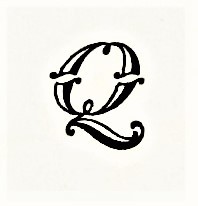





Typography Tuesday
SHADED FONTS
Shaded fonts go by a number of other monikers, including “shadowed,” “inline,” and “outline.” These are fonts where the interior of the letter is the same color as the background and the letter is formed in outline with a thin line on one side and thicker line on the other, creating a shadowed effect that suggests three-dimensionality. The fonts displayed here from Alphabets: A Manual of Letter Design, with Complete Alphabets of Varied Styles of Lettering by the American type designer and printing historian Douglas C. McMurtrie, published in Pelham, New York by Bridgman Publishers in 1926. The fonts are:
Narcissus, designed in 1921 by Walter Tiemann for the Klingspor Foundry, and based on a set of ornamental inline capitals first cut by Simon Pierre Fournier about 1745.
Mercure (we don’t have design or production information on this font).
Vanity Fair, designed by McMurtrie himself in 1923 and cast by Continental Type Founders for Condé Nast Press.
Greco Adornado, released by Richard Gans Foundry in 1924.
McMurtrie Title, also designed by McMurtrie for Condé Nast Press, and based on a specimen designed by Belgian type founder Jacques-François Rosart from 1768.
Douglas C. McMurtrie (1888-1944) held a number of important posts in his short lifetime, including printing manager for the Columbia University Printing Office, the Arbor Press, and Condé Nast Press; editor of the prestigious Ars Typographica magazine; typographic director of the Cuneo Press; director of advertising and typography at Ludlow Typograph Company; and head of the WPA’s American Imprints Inventory.
View other fonts from this publication.
View more Typography Tuesday posts.
#Typography Tuesday#typetuesday#Typography Tuesday#shaded fonts#shadow fonts#inline fonts#Alphabets A Manual of Letter Design#Douglas C. McMurtrie#Bridgman Publishers#Narcissus type#Mercure type#Vanity Fair type#Greco Adornado#McMurtrie Title#20th century type
64 notes
·
View notes
Text
Rowen Starr
Name: Rowen Starr
Age: 18
Birthday: September 24
Biological Gender: female
Pronouns: she/her
Romantic/Sexual orientation: bisexual
Height: 5’5
Weight: 130lbs
Eyes: upturned, long eyelashes, pear green iris
Hair: natural light blonde, dyed pastel red, down to ankles length, (2B)
Skin: olive
Species: spider/human hybrid
Favourite Colour: red velvet cake
Notable Physical Features: fangs, heart markings on cheeks (3 on each side), pedipalps, extra set of eyes below normal eyes (usually keeps them closed), extra set of arms
Family: mother (Tria Starr)(35)
Friends: Meihui Liu (mutual), Peri Nuno (mutual), Valorie Devich (mutual), Goose Jackson (one sided), Jay Valentine (mutual)
Enemies/People they dislike: Blanch Fournier (one sided), Amarin Wentzell (one sided), Raven Loch (one sided), Tae Choi (mutual), Arson Zhao (one sided), Aaron Clarck (mutual), Hannah Boe (one sided), Chrystal Zon (mutual), Jamie Lowe (mutual), Skell Alba (mutual), Silver Benko (mutual)
Personality Type: INTJ
Fears: the past, death
Likes: sleeping, messing with people, talking about the future, carnivorous plants, autumn, spring, spicy food, halloween
Dislikes: cold food, men, cinnamon buns, squid, winter, summer
Fighting Capabilities: extremely above average
General Intelligence: extremely above average
Specific Skill: breaking people mentally
Languages they speak: English, Portuguese
Powers: can make webs from wrists and use them like spiderman or a normal spider, venomous
Occupation: killer for hire - KillShot International
Star Sign: Libra
Random: had an emo phase
Love language: acts of service
0 notes
Text
Eco-Friendly Pulp Egg Cartons from Poultry Cartons: Safeguarding Your Future Fertility and Our Environment
In the present times environmental concern is rising up, and that means even the decision we take from time to time matter a lot. One of these decisions can be made by selecting which type of egg carton that we want to use. Welcome to Poultry Cartons where we have take our time to provide you with pulp egg cartons that shall enhance the protection of your eggs as well as the conservation of the natural environment. Here’s how they are helping to change the world and how you can help, too.
The traditional egg carton is a frequently-used packaging material that is made from polystyrene or Styrofoam materials and is widely used due to its lightweight and durable nature.
It can be noted that the conventional egg cartons, essentially the polystyrene (Styrofoam) or plastic, egg cartons bring a range of environmental issues with it. Unfortunately these materials do not decompose over time rendering them to be non–biodegradable thus adding to the common issue of plastic pollution. Once they are no longer useful, they are frequently thrown away and become a part of the world’s growing waste problem, remaining in our oceans and landfills for hundreds of years and polluting ecosystems and wildlife.
Since the pulp egg cartons are made from recycled material, there are several benefits associated with using them as follows.
Pulp egg cartons, specifically, are more preferable since they are made from recycled paper products and they are both biodegradable and compostable. This makes them a far superior choice for anyone who wants not only to save money but also to do their part to help the world around them. Pulp cartons are biodegradable, which when they are left in environments such as landfills, they disintegrate naturally into harmless by products that can fertilize the soil, consequently amounting to a lower landfill space usage and lower pollution. Also, pulp cartons are easier and cheaper to produce compared to the plastic cartons additionally; it has reduced greenhouse emissions hence fits well in the fight against climate change.
Superior Egg Protection
Besides the environmental advantages that our pulp egg cartons have, it is crucial to focus on their goal – to protect your eggs in the best possible way. The physical characteristics of pulp that are well defined and cushioning<|reserved_special_token_258|> commendation of eggs during transport and handling. Also, the breathable lining assists in incubation and ensures that the eggs do not get spoilt because air flow is very important when storing eggs.
Environmental stewardship is a major objective of this packaging company as evident through its business name-Poultry Cartons.
At Poultry Cartons, it is not only about delivering the Best quality packaging materials and services but also making sure that we create a positive impact in the lives of our clients and the community. Pierre Fournier is proud to be an environmentally friendly company that incorporates sustainable measures in production. For our cartons, we use recycled paper and other bio-degradable materials and our manufacturing processes that follow the principles of using eco-friendly methodologies to reduce wastage and energy use. The convenience and practicality of the pulp cartons makes it easy for the consumers to dispose them responsibly through recycling wherein we also support the zero-waste initiative.
Making a Difference
It is for this reason, as a message to the public when using our eco friendly pulp egg cartons that you are making the right choice. To support this, you should also ensure that your used egg cartons are disposed by being recycled. To take it to the next level, make sure you recycle the egg cartons that you use. Reusing and recycling of the egg cartons that you use is very important in sustainability.
It is also important to note that while most curbside recycling programs will accept pulp cartons, it is always wise to call and confirm with the recycling facility that is in your area. Compost systems: While it is recommended not to place these pulp cartons in recycle bins, if you have a compost bin, then you can add an important ingredient to your pile, carbon material! Not only this but also investing our money in those brands that have adopted sustainability as their business strategy ensures availability of more sustainable products.
Conclusion
Poultry Cartons incline towards providing protection to the eggs but it is high time to switch to alternatives like Pulp Egg Cartons for better protection of the eggs as well as earth. When you make this small step, you are getting to be part of a bigger cause – which aims at the preservation of the environment. We came in strength and in unity to make the world a better place one egg carton at a time. This is why saving our resources, protecting nature and becoming a green society is part of our mission. So next time when you are planning to buy eggs, opt for Poultry Cartons and that would be an environment friendly egg pack.
0 notes
Link
Check out this listing I just added to my Poshmark closet: JEANLOUP SIEFF, CHARLOTTE RAMPLING, 1985 B+W Portrait Original Negative.
0 notes
Text
JANUS + (CURRENT) HUMAN IDS
Unless it’s necessary, or preferable, Janus won’t disclose his identity to human beings while he’s doing business on Earth. Over the centuries he’s made up dozens upon dozens of names, some of which have become locally popular personalities in their own right. There’s probably someone out there that’s pieced together photographs and paintings of him, arguing that he must be proof of time travelers, or vampires, or aliens, or whatever else they prefer to make their case. He’s always considered it quite amusing, so sometimes he will leave a trail on purpose — intentionally mess up with the matrix, so to speak, just for fun.
In our present day (or rather, the period that makes up the 20th and 21st centuries) and all its variables, he will regularly* take up the following names:
Janos / Janus Ming: a Quebec-born art buyer, collector and philanthropist. Considered “eccentric” in the art circles, he’s known to be quite wealthy and enigmatic, with not many actually having seen his face. He’s known to be a fan of up-and-coming, or even obscure artists, and rumor has it that whenever he buys a piece from someone, that artist inevitably finds themselves becoming extremely popular and sought-after, almost as if by magic. He also holds an interest in artwork and archeological artifacts of renown, especially if it holds great historical and cultural significance, though not for collection purposes. Janos keeps a close eye on the art market for these pieces, and is quick to bid on them (usually through intermediaries/agents) when they show up. Then he proceeds to donate all of them to the governments of their respective countries of origin, or other proper organizations. This is his most used alias.
Jael Huang: an assistant librarian and researcher. Graduated top of his class, he most often works in academia, but he’ll also work at libraries or freelance.
Laurent Fournier: a travel writer and author of 12 travel books, 4 of which have gone best seller. Not a fan of the term “foodie”. Still referred to as that anyways.
Lawrence Kao: a professor at the University of Cambridge with focuses on European and Chinese archeology. This ID was used most during the first half of the 20th century. Lawrence supposedly died during an expedition, though his body was never found. Nowadays he prefers to play the part of Lawrence’s grandson, also named after him, a skilled freelance archeologist in his own merit.
There’s both truthful and false elements to these identities, which is what makes them so peculiar. Although Janus certainly made up a lot of things as he went along using these names, he also genuinely worked under them. What he actually did or didn’t do isn’t really what matters to him.
*there’s of course personas he makes up on the spot when the situation calls for it. He’s impersonated all types of people.
0 notes